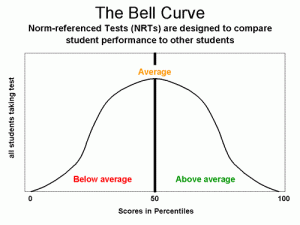 Do you ever feel like we’ve done this before? That’s what it feels like now with all the new educational reform models. We find one thing that works and do it for a few years. Then we don’t have enough data to keep it going so we throw it out and find another new model to try for another few years. Except most of these models are just reworked old models.
Do you ever feel like we’ve done this before? That’s what it feels like now with all the new educational reform models. We find one thing that works and do it for a few years. Then we don’t have enough data to keep it going so we throw it out and find another new model to try for another few years. Except most of these models are just reworked old models.
How about trying a new way to look at the problem? The main problem is that we are not meeting the needs of most learners. We definitely “left more children behind” now than ever before. [Drop out rate in California is almost 20%]
The only reason to look at past educational models is to choose the pieces that work toward a shared vision of meeting the needs of each learner. Each learner means any age at any time in their life. Schools were designed around age levels to meet the needs of the school, managers and teachers. Every student at that age level was going to be taught the same thing at the same time. Forget customization or individualization. If you were 6 years old, you were supposed to be able to do specific skills and know information by that age. It didn’t matter if in the class you were way ahead of the other students or years behind. The class was set up to handle the Bell curve with so many at the top and so many at the bottom with most everyone else in the middle.

When I saw this, it brought back icky memories of falling in the below average area for math. I wasn’t average in math. It made me feel bad, stupid, wrong. What was wrong with me? I get it now that I was at where I was supposed to be for me.
What if… I was identified as a math learner with some strengths and some weaknesses. As part of a team, I was given an advisor and math coach (another student who knew a little more than me) and we worked together on activities. My advisor guided me to understand the problems and math activities. The advisor learned more by teaching me how to do the math to solve the problem we were given.
Teacher-directed instruction means the teacher uses existing curriculum (for the average student) or spends time adapting the curriculum to meet the needs of all students. Personalized learning starts with the learner. So when you review the learning theories, B.F. Skinner ideas on Operant Conditioning that contributed to Behaviorism to Constructivism (Piaget, Bruner, Papert) that represents generative learning, discovery learning, and situated learning, teacher-centric learning is still in place. (Source: Instructional Development Timeline)
Schools are looking at trying to embed personalized learning into existing systems that focus on Behaviorism and build projects, Constructivism. It may work for that project, but what happens to that classroom? Is it still teacher-centric with a little student voice thrown in here and there? To personalize learning and meet the needs of each learner, how about rethinking if we use Behaviorist theories in a student-centered environment? This may mean we need to completely redesign everything. Now I have to look for examples of learning environments where the students use their voice and choose the best strategies for their learning path.
I’m going to focus on personalized learning, student voice and choice, and to re-evaluate what learner-centered means.


